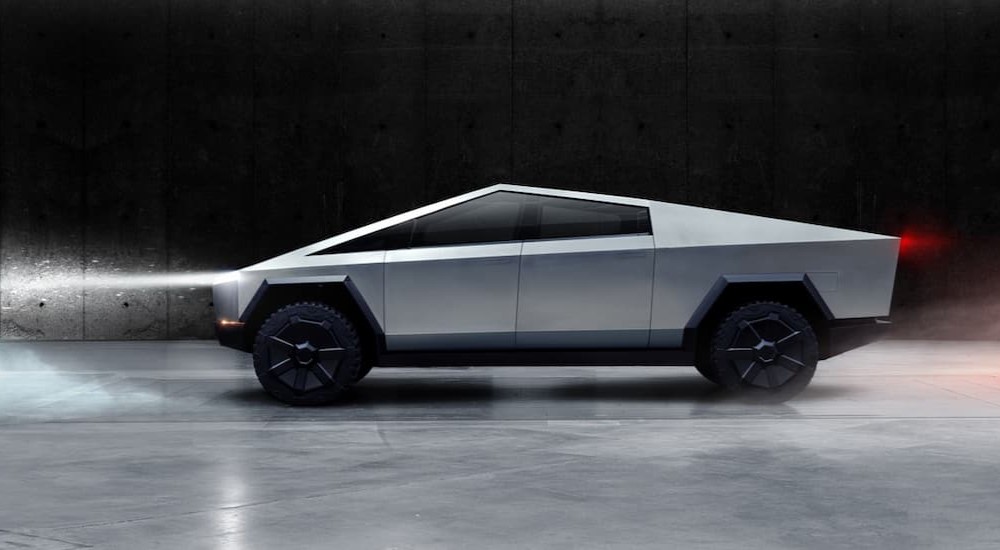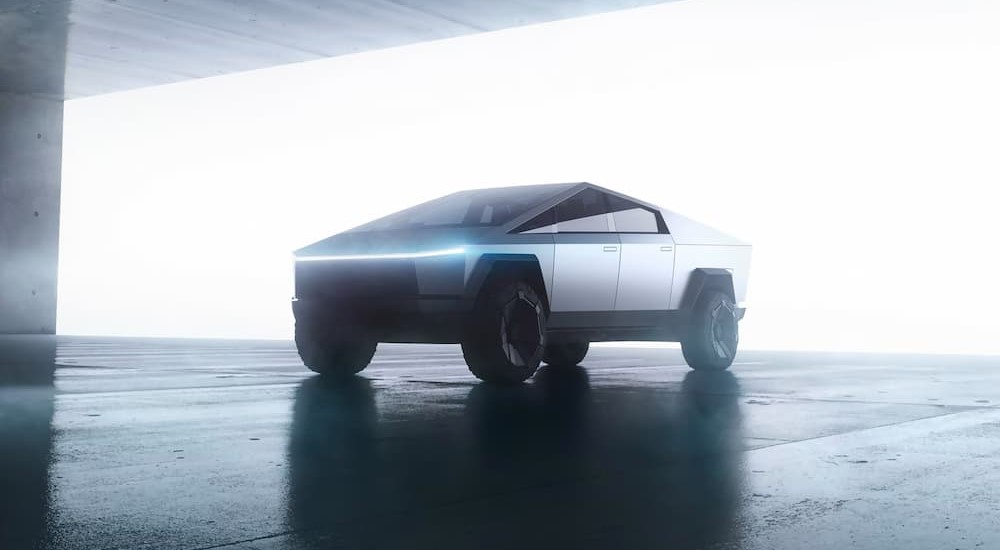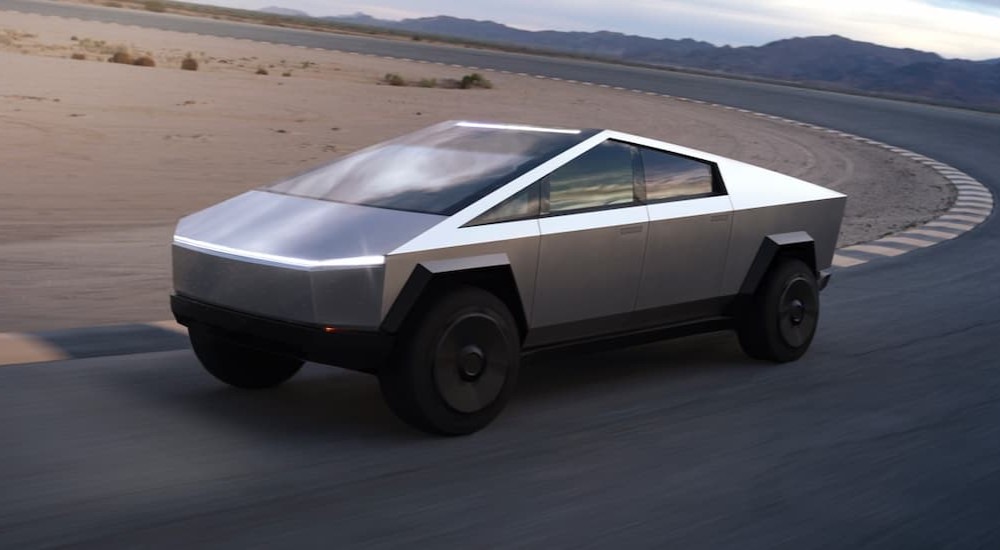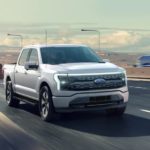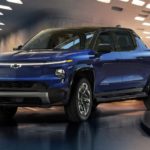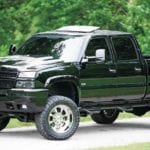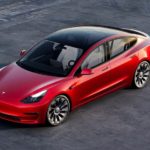When the first Toyota Prius silently rolled into the American consciousness in 2000, it was hard to imagine a day when hybrid and all-electric vehicles would come for the pickup segment. A lot can change over the course of a few decades, but even in the new, increasingly EV-friendly market, Tesla’s Cybertruck still caught many off guard. Between its promised range, power, and unique design, the Cybertruck certainly turned many heads when it was first unveiled in 2019. After its Earth (and window) shattering debut, delayed release, and some poor early reviews, it’s fair to ask: is Tesla all-electric pickup the new face of the segment, or an attention-seeking meme of a truck?
With its low-resolution appearance and miniscule bed, it’s easy to dismiss the Cybertruck as a shiny toy masquerading as a work truck, but the truth is, it’s not alone. The pickup segment has become increasingly focused on comfort, style, and convenience over the last decade, nixing the rough-and-tumble workhorses of the past for a high-riding, oversized design that simply wouldn’t be practical on most job sites or affordable for most tradesmen. Maybe Tesla is some sort of visionary that is just taking this trend to its logical extreme, or maybe the Cybertruck represents the pinnacle of the great pickup schism, creating a clear dividing line between those trucks intended as legitimate work vehicles and models that are more focused on truck-like style over any real truck-like substance.
With questions around build quality and utility, not to mention a polarizing CEO and relatively high starting price, the pickup certainly has its work cut out for it if it wants to become the standard by which all EV pickups are measured. Let’s take a closer look at the Cybertruck’s development, specs, and utility and see if Tesla has struck gold or if the Cybertruck has missed its moment.
Disruptor or Disappointment?
Tesla has not been immune from the pitfalls common to all start-ups and industry “disruptors”. It’s always easy to generate a little press by flying in the face of best practices and turning an industry on its head. As start-ups like Airbnb, DoorDash, and Uber have shown, disruption is all fun and games until it starts to face some of the challenges established industry players have long figured out. Whether you’re talking about dealing with safety and labor issues, increased fees, or rental prices, many of these disruptors have stuck with the “move fast and break things” ethos to an extent that’s largely been a net negative for the average consumer.
Tesla has been a runaway success by startup standards, proving the viability of a direct-to-consumer sales approach. They are producing some of the most stylish, buzzworthy EVs to date, and gaining plenty of attention for their meme-based marketing approach (see the Spaceballs-inspired “Ludicrous Mode” and Plaid trim). But some of the more substantive aspects of auto manufacturing seem to have been sacrificed in a bid to play the outsider.
Build quality has been a notable issue, with Tesla models including the Cybertruck being dinged for their wide panel gaps, defective hood and trunk closures, asymmetrical steering wheels, loose parts, thin paint, and slipshod interiors. Auto manufacturing consultant and former Ford engineer Sandy Munro compared one Model 3’s flaws to those one might find in a 1990s Kia, describing the compact’s panel gaps as being so large that “you can see ‘em from Mars,” an assessment that even Elon Musk called “accurate.”
It would be easy to attribute these build quality issues to a lack of infrastructure of institutional knowledge compared to some of the industry’s established, 100-plus-year-old brands. In reality, it’s Tesla’s own success that’s most to blame. In its first year on the market in 2012, Tesla produced just 2,600 vehicles. That number almost doubled to 22,400 by 2013 and has been on a meteoric rise ever since, reaching 245,200 in 2018 and peaking at 1.3 million in 2022.
That’s some impressive growth, but it also comes with its challenges. Tesla has certainly scaled up to meet the increased demand, but when you experience a 50,000 percent increase in sales over a decade, some things are bound to fall through the cracks. Quality assurance is a challenge for even the industry’s biggest names, and while Tesla is quickly approaching that status, it’s still struggling to turn out a consistent product. That’s annoying when you’re dealing with a sedan or SUV, but can be a downright deal breaker in the pickup segment where vehicles are typically tasked to put in some real work.
Questionable Utility
When it comes to pure utility, the Cybertruck also seems to be a bit of a mixed bag. There’s no denying the EV’s considerable torque and horsepower. With an adjustable air suspension and generous approach and departure angles, the Cybertruck should certainly be able to hold its own in off-road scenarios, but it falls a little short when it comes to more day-to-day applications.
Take the cargo bed, for example. The Cybertruck went viral in late 2023 thanks to a photo that showed a mountain bike sticking out well beyond the truck’s tailgate. Measuring six feet long and four feet wide, the Cybertruck’s cargo bed is a little demure compared to the rest of the full-size segment, though it does best Ford and Rivian’s EV pickup offerings at 5.5 and 4.5 feet respectively. Still, some odd design choices make that 6×4 bed a little more snug than it needs to be, thanks in part to the oddly angled sides that cause the cargo bed to be a little narrower at the bottom. That’s not even touching on the bed-hogging extended-range battery pack we’ll get into in a moment.
Cons aside, the truth is that utility has become an increasingly unimportant factor in the pickup segment lately. While pickups were once largely positioned as rough-and-tumble work trucks, that’s all changed in recent decades. Pickup trucks have slowly become lifestyle vehicles, with drivers gravitating towards the segment not for their towing and cargo capacity or off-road capabilities, but for their sheer size, ride height, and, increasingly, luxury features.
Today’s pickups have become veritable luxury vehicles with a mix of comfort, convenience, and tech features that have made some higher trims into something approaching a full-service spa on wheels. With trims and options including open-pore wood, heated, ventilated, and even massaging seats, heads-up displays, power-retractable running boards, and premium audio systems, many of today’s pickups are virtually recognizable when compared to the bare-bones models of old. As recently as 2018, four-door luxury pickups were selling for an average of $50,000 to $60,000. In six short years, the number has climbed well past $70,000. This is the market the Cybertruck stepped into, which helps lend a little context to what might seem at first like an exceedingly impractical pickup.
Big Promises
In many ways, the Cybertruck is a victim of Tesla’s marketing department. As is often the case with a disruption-minded startup, Tesla promised the world, got all the PR it wanted, and then rolled out a production model that fell well short of the concept version. Musk copped to the downgrade in a 2022 interview, acknowledging that the Cybertruck’s specs “will be different” than the original concept model.
The most noticeable change would have to be the price. When first unveiled in 2019, Tesla floated an MSRP of $60,990 for the range-topping tri-motor model. Now known as the Cyberbeast, that tri-motor trim has increased to some $99,990 which, recent inflation aside, represents almost a 64 percent increase. The dual-motor version retails for just over $80,000, up from a projected $50,000 in 2019. These sorts of price hikes will definitely keep some consumers waiting for the $60,000 single-motor version set to debut in 2025.
The Cybertruck has also fallen short of expectations in range and towing capacity. Again, it’s hard to fault a company for trying to garner a little attention with a concept model, but we should have probably known that the Cyberbeast’s 500-mile range was too good to be true. The actual tri-motor version will max out 320 miles (340 for the dual-motor version), but that grows to 440 miles (470 on the dual-motor) with the addition of the optional range extender battery pack.
There’s one problem, though. In a move we’ve yet to see from the rest of the EV pickup segment, this battery pack is located in the Cybertruck’s bed, reducing cargo capacity by one-third and further impacting the truck’s utility. It’s an inelegant solution from Tesla and one that would almost defy belief if introduced by a more established automaker. Tesla can trade on its cult status when it comes to such quirks, knowing that a legion of fanboys will defend any Musk-led move no matter how little sense it makes.
The Cyberbeast’s 14,000-pound towing capacity has also come back down to a more realistic 11,000 pounds, with total payload capacity also falling 1,000 pounds short of the original estimate. The single-motor version is expected to max out at 7,500 pounds, though only time will tell what the actual number might be. That said, the production model does exceed the original concept version in a few key departments. The Cyberbeast offers an impressive 845 horsepower, a 45 hp increase over the 2019 version, though the dual motor falls 200 hp short of its announced 800 horsepower target.
Verdict
Can the new Cybertruck be the face of EV trucks? In a word, yes, though at this point it looks like it will be an uphill battle. Barring some major shake-up in the Tesla business model, The Cybertruck will likely never be accessible enough to become the consumer’s go-to EV pickup option. The forthcoming single-motor version will still cost at least $60,000, putting the model well out of the range of many drivers. This trend has already played out with Tesla’s car- and SUV-based offerings which, due to their higher-than-average price, are still a rare sight in some parts of the country.
While Tesla’s products are easily some of the most talked-about EV offerings, these prices have kept them from becoming more popular, and it’s hard to see the Cybertruck faring any differently. The pickup is also bound to face increased competition in the coming years as major brands introduce their own range of EV trucks, erasing one of Tesla’s key advantages and leaving little room for error. The pickup’s long roll-out certainly didn’t help the Cybertruck’s chances of becoming the face of the segment, giving longstanding brands like Ford and Chevy and even fellow startups like Rivian a lot of opportunity to catch up over the last few years.
When first unveiled as a concept, the Cybertruck was certainly revolutionary. But the long roll-out–which, to be fair, had a lot to do with the pandemic and associated supply chain issues–saw the pickup lose its “first to market” advantage, and was quickly surpassed by more traditional EV truck offerings from established brands. One must also factor in the Cybertruck’s problematic connotations. The pickup, and the Tesla brand as a whole, are hampered by a polarizing CEO who, in his inability to shut up and watch the money roll in, is forcing a kind of identity politics on the consumer that the auto market has rarely seen before. Taken individually, the Cybertruck’s utility, build quality, quirks, and ideological connotations might not present much of a roadblock, but add them up and the Cybertruck is certainly going to need every last ounce of horsepower to climb the hill that stands before it.
